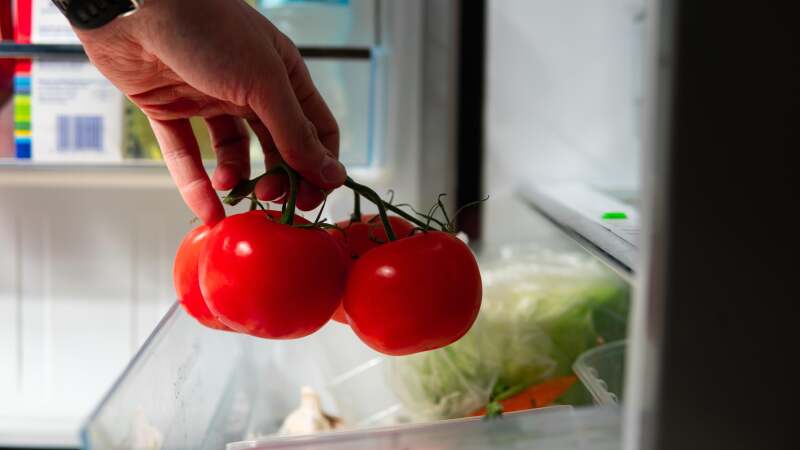With tomato season in full swing, experts are urging Britons to stop storing their tomatoes in the fridge.
While it might seem like a way to preserve freshness, chilling tomatoes at low temperatures destroys both their texture and flavour.
According to Professor Graham Seymour, emeritus professor of plant biotechnology at the University of Nottingham, storing ripe tomatoes at 5°C – the average fridge temperature – significantly reduces the aromatic compounds that give tomatoes their distinct taste.
“If you have a suitable storage area at a temperature of 12.5C-14C, then ripening will be slowed,” Professor Seymour says. “Flavour could still be altered somewhat, but it’s much better than storing them at 4-5C in the fridge. I am afraid like most things it’s a compromise,” he said.
Chilled tomatoes also become “mealy” due to damaged cell membranes, resulting in a grainy texture.
Instead, experts recommend keeping tomatoes at room temperature – ideally around 20°C – out of direct sunlight and away from fruits like bananas that emit ethylene gas and speed up ripening.
Read Also: Bowel cancer is rising in Nigeria – Is a lack of fibre hidden cause?
Supermarket tomatoes are often sold in perforated plastic packaging to reduce condensation, and Waitrose advises keeping them sealed in their original wrap until needed.
For underripe tomatoes, placing them near ethylene-producing fruits or in a sunny spot can encourage ripening. Overripe ones are perfect for soups or sauces.
While tomatoes can be frozen for later use, they’re best reserved for cooking due to their high water content. Cooking methods such as roasting or frying can also bring out the best in underripe or less flavoursome varieties.
To maximise taste and shelf life, experts suggest choosing British-grown tomatoes, which are picked ripe and travel shorter distances. These tend to retain flavour better than long-life varieties imported from abroad.
Bottom line? Keep your tomatoes out of the fridge and let them breathe – your tastebuds will thank you.



